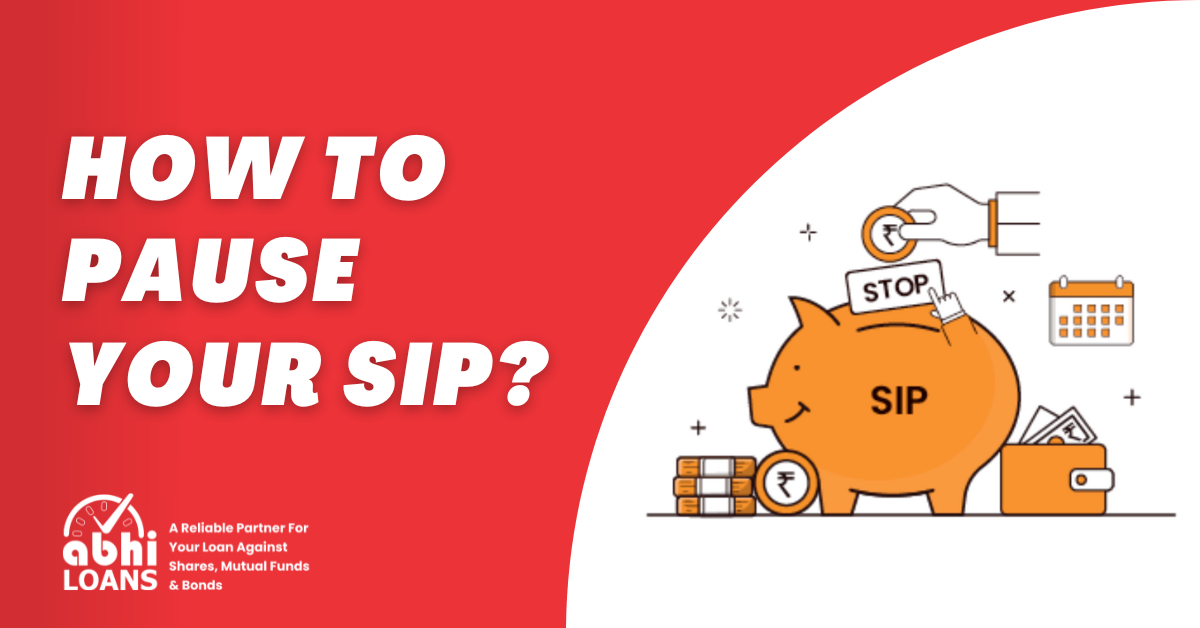How to Pause Your SIP Investments?
Embraced by many individuals desiring a methodical strategy for building wealth, Systematic Investment Plans (SIPs) have gained widespread popularity. This structured approach not only provides financial discipline but also fosters a steady and consistent path towards long-term wealth accumulation.
Investors appreciate SIPs for their simplicity and the potential to navigate market fluctuations with resilience. SIPs allow investors to contribute fixed amounts at regular intervals, fostering financial discipline and long-term wealth creation.
However, life is unpredictable, and there might be instances when you need to reassess your financial strategy. This brings us to a crucial aspect—knowing how to discontinue the ongoing SIP when circumstances demand a break.
Understanding Systematic Investment Plans (SIPs)
Before diving into the intricacies of how to pause an SIP, let’s briefly revisit what SIPs entail. A Systematic Investment Plan is a disciplined way of investing in mutual funds, where investors contribute a fixed amount at regular intervals, usually monthly.
This approach harnesses the power of compounding, reduces the impact of market volatility, and promotes a steady, long-term wealth creation journey.
The Need to Pause an SIP
Life is unpredictable, and financial priorities may change due to various reasons like a sudden expense, job loss, or other unforeseen circumstances. During such times, the flexibility to pause an SIP becomes invaluable. Pausing an SIP allows investors to temporarily discontinue their regular contributions without exiting the investment altogether.
Steps to Pause Your SIP
1. Contact Your Fund House
The first step in discontinuing your SIP is to get in touch with the fund house managing your investments. This can usually be done through their customer support helpline or online portal. Provide them with the necessary details like your folio number and the specific SIP you wish to pause.
2. Submit a Written Request
Many fund houses require investors to submit a written request to pause an SIP. This can be done through a physical letter or an email. Make sure to include all relevant details and clearly state the reason for the pause.
3. Online Platforms
In the digital age, most fund houses offer online platforms to allow investors to manage investments. Log in to your account on the fund house’s website and navigate to the SIP section. Look for the option to pause or stop your SIP and follow the on-screen instructions.
4. Provide Valid Reasons
While not all fund houses may require a reason for an SIP pause, some might. Be prepared to provide a valid reason for the temporary discontinuation. This could range from a medical emergency to a short-term financial crunch.
Managing Your Investments during the Pause
When you pause your SIPs, it’s crucial to manage your investments wisely to ensure that your financial goals are not adversely affected.
Stay Informed
Even when your SIP is paused, stay informed about the market trends and your fund’s performance. Regularly check your investment portfolio and be ready to resume your SIP when the time is right. This proactive approach ensures that you remain agile in responding to market dynamics and can make informed decisions for your financial goals.
Reassess Your Financial Goals
The pause in your SIP provides an excellent opportunity to reassess your financial goals and investment strategy. Use this time to realign your investments with your long-term objectives and ensure they align with your evolving financial needs.
Explore Other Investment Avenues
While your SIP is on hold, consider exploring other investment avenues that align with your risk tolerance and financial goals. Diversifying your portfolio can enhance its resilience. Additionally, conducting thorough research and seeking professional advice can help you make informed decisions and optimize your overall investment strategy.
Emergency Fund Utilization
If the reason for pausing your SIP is a short-term financial crunch, consider utilizing your emergency fund. This fund is specifically set aside to cover unexpected expenses and can act as a temporary buffer. However, it’s essential to replenish the emergency fund once your financial situation stabilizes to maintain its effectiveness for future unforeseen circumstances.
Conclusion
Pausing an SIP is a strategic move that reflects the flexibility inherent in modern investment options. It allows investors to navigate the complexities of life without jeopardizing their long-term financial goals. Remember, the key to successful investing lies in adaptability and informed decision-making.
By understanding how to pause an SIP and manage your investments effectively during these pauses, you gain better control over your financial journey. Stay disciplined, stay informed, and unlock the true potential of your investments.
Frequently Asked Questions (FAQs)
Q: How can I pause my Systematic Investment Plan (SIP)?
Contact your fund house through customer support or their online portal. Provide your folio number and details of the specific SIP you wish to pause.
Q: What is a Systematic Investment Plan (SIP)?
SIP is a disciplined mutual fund investment where fixed amounts are contributed at regular intervals. It leverages compounding, minimizes market volatility impact, and fosters long-term wealth creation.
Q: Why would I need to discontinue the ongoing SIP?
Life is unpredictable, and financial priorities may shift due to sudden expenses, job loss, or unforeseen circumstances. An SIP pause allows you to temporarily halt contributions without exiting the investment.
Q: What are the steps to pause an SIP?
Firstly, contact your fund house, submit a written request (physical or email), or use online platforms. Provide necessary details and a clear reason for the pause, if required.
Q: What should I do during the pause in my SIP?
Stay informed about market trends, reassess financial goals, explore other investment avenues, and consider utilizing your emergency fund if facing a short-term financial crunch. Regularly monitor your portfolio to resume SIP when appropriate.

